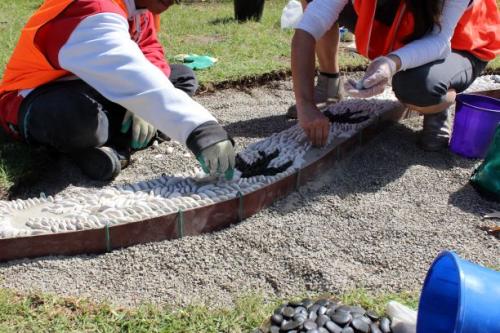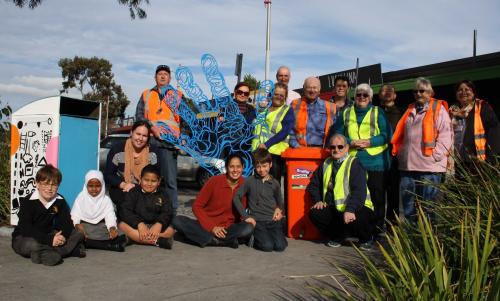Addressing the risk factors for offending requires a collaborative effort across government. The Strategy seeks to achieve progress against four overarching crime prevention outcomes:
- Victorian communities are more connected, cohesive and engaged in designing and delivering local solutions to prevent crime
- fewer Victorians come into contact with the criminal justice system
- more people at risk of offending are connected with earlier, more effective support
- Victorians are safer and feel safer.
These outcomes are ambitious, comprehensive, and they will help us focus our collective efforts and foster a shared responsibility to prevent crime and keep Victorian communities safe.
The four overarching outcomes will be achieved through:
- whole-of-government efforts to build protective factors for Victorians, such as education, employment, health and wellbeing and justice services
- individual crime prevention projects and initiatives
- broader crime prevention programs (including our Building Safer Communities Program)
- place-based efforts to tackle local issues.

Measuring efforts across government
There are a broad range of existing government programs and reforms that address risk factors for offending, such as unemployment and low school achievement and engagement.
We will use a range of indicators from education, employment, justice and health and wellbeing to track whole-of-government progress toward reducing the presence of these risk factors; and to show how these efforts are achieving progress towards the four crime prevention outcomes. For example:
- whether young people are engaged in employment and education, and how connected young people feel to their school
- improvement in employment rates, especially for young people, and level of support provided for disadvantaged job seekers
- provision of support to alleviate homelessness (including access to stable housing)
- provision of timely mental health support
- improvements in support for those experiencing family violence and for children in need of protection
- reduction in rates of victimisation from crime, and increasing the proportion of people who feel safe in their communities.

Measuring the impact of the Crime Prevention Strategy and local initiatives
The impact of our work with communities to deliver crime prevention initiatives at the local level will also be measured and reported on to help us understand how community efforts are contributing to the four crime prevention outcomes. These community level measures will demonstrate our progress under each of the Strategy’s three Action Areas:
- Action Area 1 - empower and invest in communities to deliver tailored and effective interventions addressing the causes of offending.
- Action Area 2 - enhance and connect support to people and communities in need, including through creating partnerships across private, public and community sectors.
- Action Area 3 - build and share the evidence base on what works to prevent crime.
If our collective efforts are making a positive impact in all three Action Areas, we will see Victorian communities become connected and engaged in delivering local solutions to prevent crime; fewer Victorians in contact with the criminal justice system; more people connected with early and effective support; and communities that feel safer.
By having shared outcomes to measure our collective efforts across government and within our own local communities, we can foster a shared responsibility to prevent crime and keep Victorian communities safe.
In the Strategy
- Intervening early to prevent crime
- A joined-up approach to support people and communities in need
- Working with the community across three action areas
- Action Area 1 - Empower and invest in communities to implement local solutions
- Action Area 2 - Enhance and connect support for people in need
- Action Area 3 – Evidence and impact for effective and innovative approaches
- How the Strategy was developed
- Go to the Building Safer Communities Program
